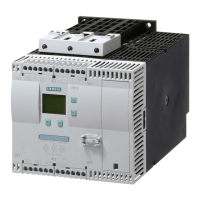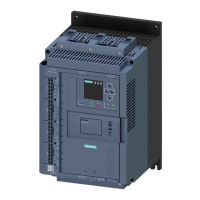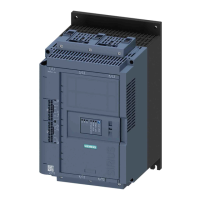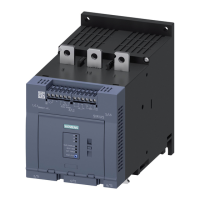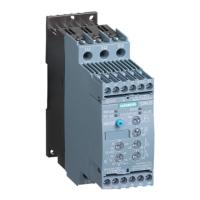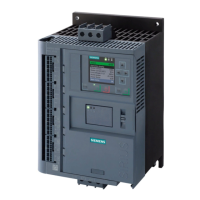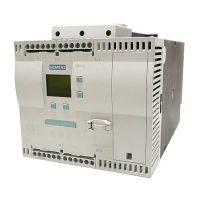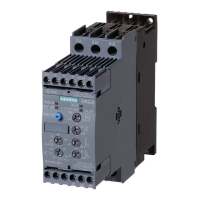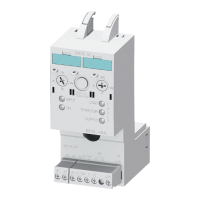Product description
3.2 Functional principle of the SIRIUS 3RW30 and 3RW40 soft starters
SIRIUS 3RW30 / 3RW40
26 Manual, 10/2018, NEB535199502000/RS-AB/005
The frequency remains constant during this process and corresponds to the mains
frequency, in contrast to frequency controlled starting and stopping of a frequency converter.
Once the motor has been started up correctly, the thyristors are subject to fully advanced
control, meaning that the whole mains voltage is applied to the motor terminals. As the motor
voltage does not have to be controlled during operation, the thyristors are bridged by integral
bypass contacts that are rated for AC1 current. This minimizes the waste heat generated
during uninterrupted duty (which is caused by the thyristor's power loss), and minimizes
heating up of the switching device's environment.
The bypass contacts are protected by an integrated, electronic arc quenching system during
operation. If they are opened in the event of a fault, e.g. if the control voltage is temporarily
interrupted, mechanical vibrations occur, or the coil operating mechanism or the main
contact spring has reached the end of its service life and is defective, the equipment is not
damaged.
The diagram below shows the method of operation of the SIRIUS 3RW30 and 3RW40 soft
starters:
Figure 3-3 Phase angle control and schematic diagram of a two-phase controlled soft starter with integral bypass
contacts
Method of operation of a two-phase controlled soft starter
A special method of operation is used for the SIRIUS 3RW30 and 3RW40 two-phase
controlled soft starters based on SIEMENS' patented "polarity balancing" control principle.
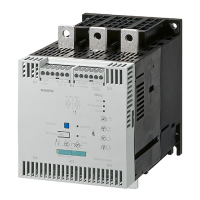
